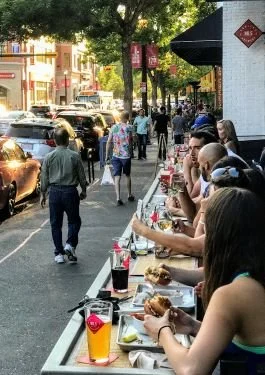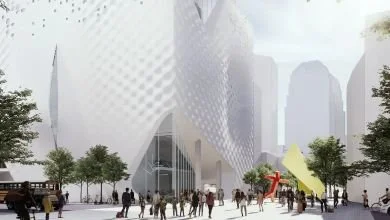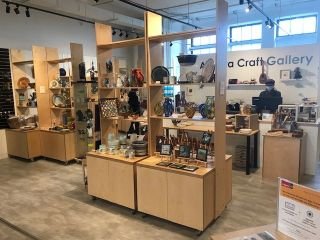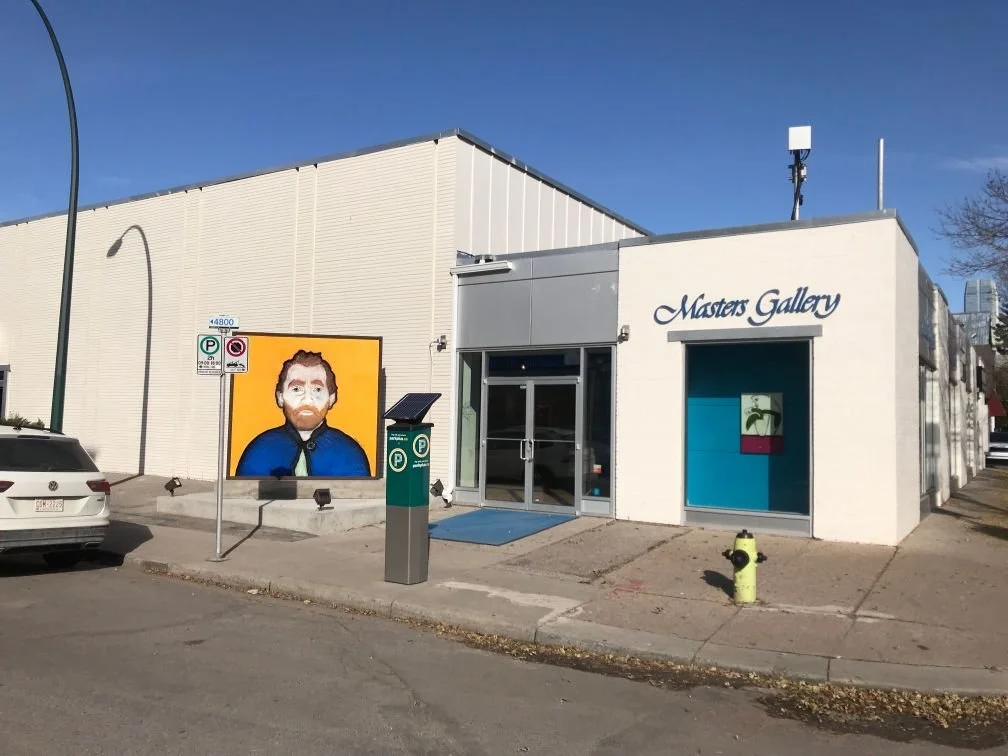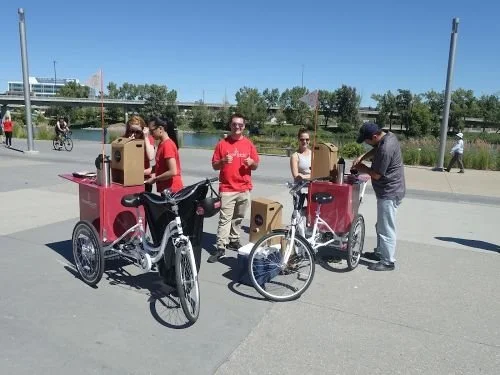Calgary Gets No Respect as A Creative / Arts City
So what will it take to make Calgary a recognized arts/creative/music/tech city like Nashville, Seattle, Austin or even Kitchener/Waterloo, that so many local City politicians and planners want to happen.
A recent CBC news story “This is why youth say they’re leaving Alberta” had Calgary influencers crying the city desperately needs “more events, more cultural activities” to attract and retain youth to Calgary.
Why? Because a recent Canada West Foundation survey of 25 to 29-year-olds, found that since 2015 more young people are leaving the city than moving here.
The reasons for the negative net migration are the city lacks vibrancy and diversity, as well as being too conservative and intolerant.
I couldn’t help but think - “How much more CAN we do?”
For the past 30+ years, we have been adding hundreds, perhaps thousands of more events and spent billions building more arts and culture facilities, including the amazing new Central Library with its hundreds of events every year.
As well as billions more on new recreational facilities (including one of the largest public skate parks in North America) which are also key to retaining and attracting young professionals.
I began to wonder…
Will the planned $400M expansion and upgrade of Arts Commons and $125M renovation of the Glenbow now do it? The skeptic in me asks; “Why haven’t these two mega institutions already created a thriving arts hub around them over the past 30+ years?”
Will the $500M invested in the new Central Library, National Music Centre and Platform in East Village elevate Calgary’s status as creative city? Will they attract private sector development – a bookstore, commercial art galleries, live music venues and cafes nearby?
Does Calgary really have a “Music Mile?” The music mile is more a wish than a fact - Calgary’s 20+ live music venues are scattered around the City Centre and beyond, not within walking distance along a single street like in major Music Cities like Nashville, Memphis, or Austin. Perhaps the City could help with the creation of more live music venues by lowering taxes to small businesses.
Will an expanded trade show and convention centre and maybe a new event centre (aka an arena that can accommodate few more big-name concerts) be the catalyst for a vibrant Culture + Entertainment District that will make Calgary more attractive to the next generation?
Can Calgary support an entertainment district at Stampede Park AND an arts and cultural district around Olympic Plaza AND a restaurant, patio, shopping street along both 17th Ave SW and in Kensington?
While I hope each will succeed, I can’t help but wonder - can a city plan or buy itself an arts district with public money - or does it have to be more of a grass roots endeavour? Are master planned arts and entertainment districts successful? Aren’t the best arts district created by the artists and private investors, not government?
Case in point – Look no further that Calgary’s Inglewood Art District!
Branding/Image Problem
The City of Calgary, Calgary Economic Development, Tourism Calgary, and others continue working hard to change the City’s and its downtown’s image from corporate to creative, as a means of making our city more attractive to youth, middle-aged entrepreneurs, and tech start-ups. And they have been trying to do this for decades, not just in the past few years.
For some reason Calgary hasn’t been able to capitalize on its investment the arts and for 30+ years. It has always puzzled me why Calgary isn’t recognized across Canada and in North America as a major arts hub.
But they continue fight an uphill battle! Once a city has an image it is hard to change that. Calgary will always be The Stampede City for most Canadians and around the world.
Calgary has dozens of outdoor markets in various communities in the inner-city.
Calgary has an outdoor festival every weekend from June to September, sometimes 2 or 3.
Here are 10 reasons why Calgary should be recognized as a vibrant creative city:
Calgary has a comprehensive year-round schedule of cultural festivals including High Performance Rodeo (theatre), Calgary International Folk Music Festival, Calgary Comic and Entertainment Expo, Sled Island (music and art), Calgary International Film Festival (as well as numerous music, art and film festivals) and Wordfest: Calgary International Writers’ Festival - just to name a few of the 100+ annual art / ethnic festivals.
Arts Commons is one of North America’s largest performing arts centers with its five performance spaces and 3,200 seats (larger than Lincoln Center in NYC). In addition, the greater downtown is home to Vertigo, Grand, TransAlta and Pumphouse performing arts complexes. Arts Commons boasts 1,800+ performance annually.
Mount Royal University (MRU) is home to the Mount Royal Conservatory (est 1910) which includes various ensembles – Calgary Symphony Orchestra, Calgary Fiddlers, the MRC Jazz Big Band, the Mount Royal Youth Choir, the Children's Choir, Junior Children's Choir and The Lyric Chamber Players. MRU also is home to the Taylor Centre for the Performing Arts, which includes the 787-seat Bella Concert Hall.
The Calgary Performing Arts Festival (known as the Calgary’ Kiwanis Festival until 2014) began in 1931 in the Knox United Church. It grew to become one of the largest amateur competitive festivals in North America. Today the Festival has approximately 4,000 entries and 12,000 12,000 participants. It is an incubator for fostering young performing arts talent.
Calgary is home to one of Canada’s oldest visual art school - the Alberta University of the Arts (formerly Alberta College of Art and Design) dates to 1926 when Lars Haukaness was hired as the first head of the Art Department at the Provincial Institute of Technology and Art (now Southern Alberta Institute of Technology – SAIT). Today, Calgary has a robust visual arts community – Galleries West online magazine includes 40+ galleries, across the city.
Calgary has five public art galleries – Glenbow, Illingsworth Kerr Gallery (at Alberta University of the Arts), Nickel Gallery (University of Calgary), Contemporary Calgary and the privately funded Esker Foundation Contemporary Art Gallery (privately funded public art gallery). Furthermore, the Glenbow has one of the largest collections of art in Canada and now will offer free admission. Calgary is also home to four artist-run-centres - The New Gallery, Stride Gallery and Truck Gallery, as well as the nvrlnd arts foundation that converts abandon buildings into artist studios and community event spaces.
Calgary is home to the National Music Centre that includes a collection of 200+ fully functional historic musical instruments spanning 450 years of music. It also includes the most comprehensive collection of music artifacts in Canada and is home to the historic King Eddy live music venue as well as recording studios.
Calgary has a vibrant performing arts community - Calgary Opera, Alberta Ballet, Decidedly Jazz, Calgary Philharmonic Orchestra, and 40+ theatre groups. This includes Lunchbox Theatre (est 1975) one of the most successful and longest running lunchtime theatre companies in the world. The Alberta Ballet has produced contemporary ballets with the likes of Elton John, Joni Mitchell, k.d. lang and David Bowie. Both the Alberta Ballet and Decidedly Jazz have dance schools as part of their mandate.
The greater downtown is home to 100+ public artworks and close to 100 murals by local, national, and international artists scattered around the greater downtown – creating a 100-block outdoor art gallery.
The Banff Centre for Arts and Creativity (est 1935) has attracted artists and creative individuals from various disciplines from around the world for 85+ years.
For a city of 1.5 million people with just little over a 100-year history, I’d argue this is an impressive list of cultural activities. But something is missing.
Creating A Creative Ecosystem
The term “ecosystem” is being used today by many tech entrepreneurs and urbanists when it comes to creating tech and/or creative hub. It is a biological term referring to how a community of organisms that live together in interconnected relationships allows them to foster each other’s growth and survival. It is all about the synergies, the mixing of people from different creative enterprises as the catalyst for new ideas and opportunities.
Calgary’s downtown has been a vibrant energy ecosystem for decades, allowing oil and gas entrepreneurs to connect with engineers, geologists, accountants, bankers, software developers, lawyers, and venture capitalists to create start-up oil and gas firms that grew to become large corporations. In this case, Calgary used its proximity to huge oil and gas reserves as its competitive advantage.
However, when it comes to the today’s creative industry entrepreneurs, they can be located anywhere. The key factors for fostering a thriving creative ecosystem are climate, proximity to desirable and diverse recreation, entertainment and cultural activities – combined with diverse, well-paying, challenging, employment opportunities and housing affordability.
Calgary has all the above in spades, but yet the city struggles to change its image.
Last Word
What seems to be missing is an effective branding campaign that captures the imagination of our youth and those in other cities and countries that Calgary is a vibrant 21st city.
Or is it just a case that no matter what you do, or how much you have to offer “the grass will always greener in another city.” Not only for young adults, but middle-aged and empty nesters.
If you like this blog, you will like these links:
CBC: Calgary’s slogan should be “The Family Friendly” City!
Calgary’s Brain Drain: Myth or Reality?
Calgary Herald: Is Calgary really the 5th most livable city in the world?


